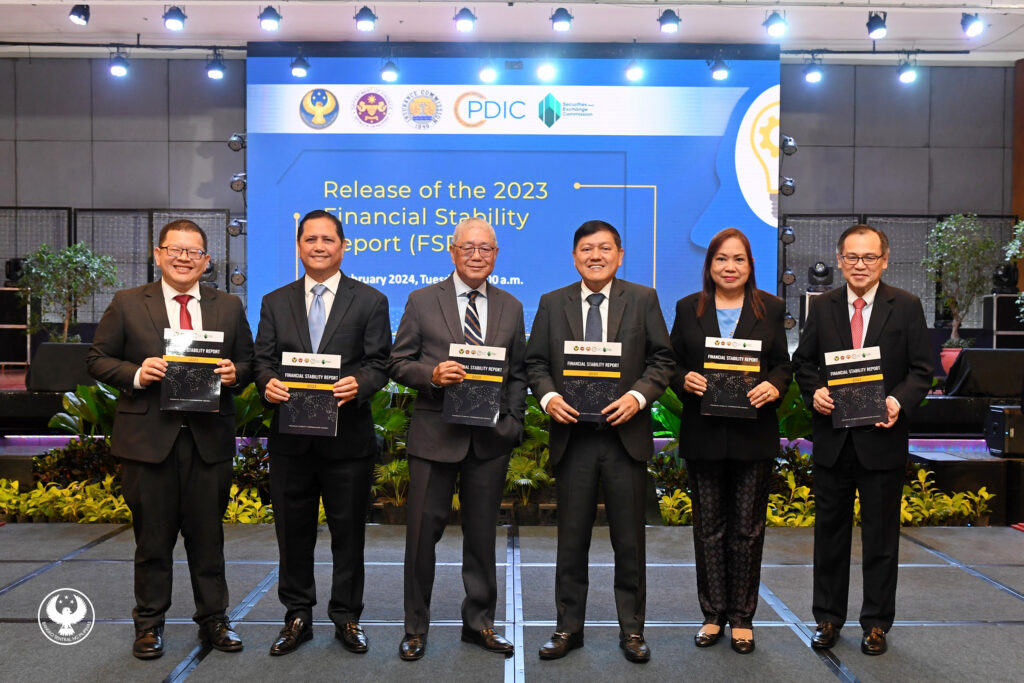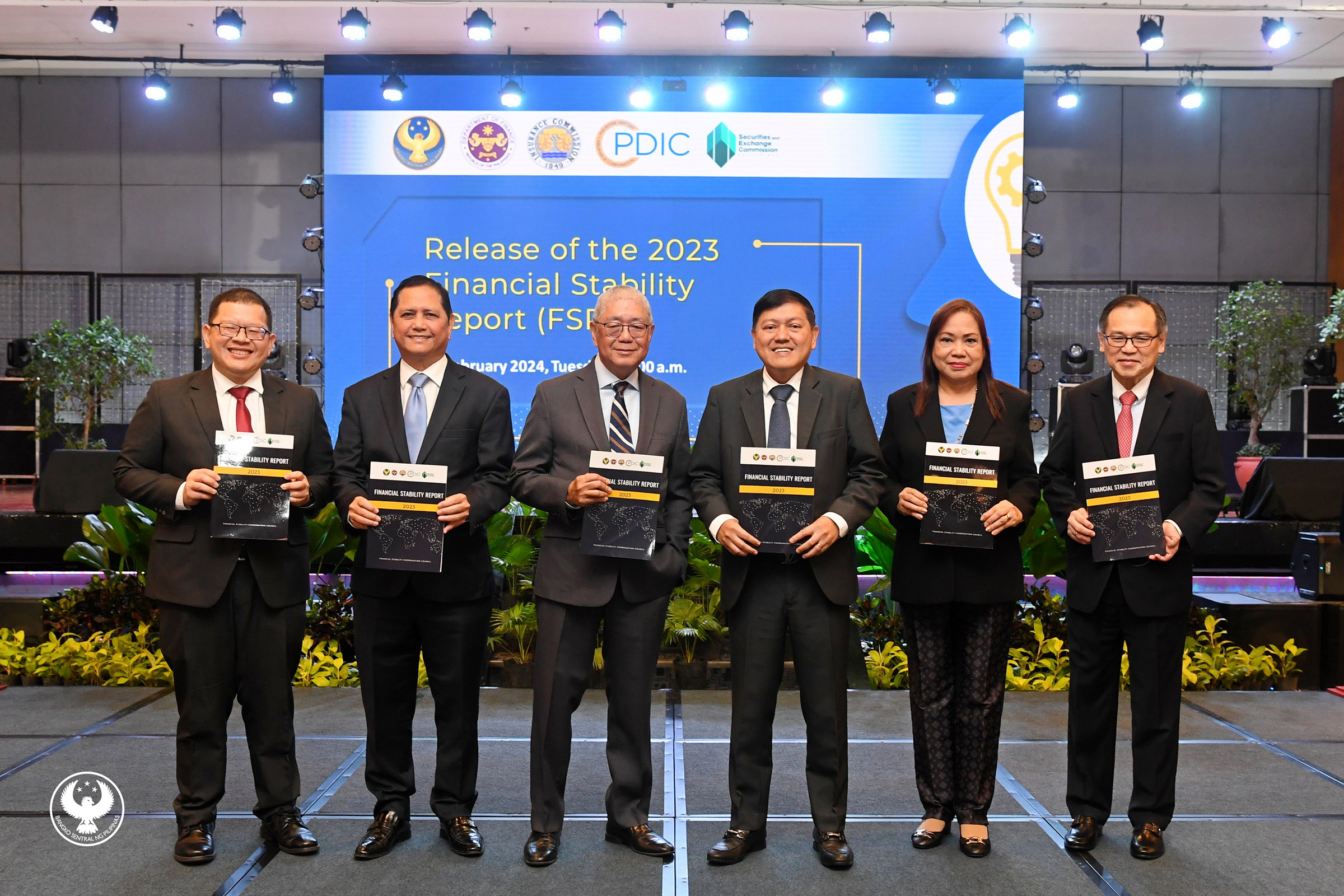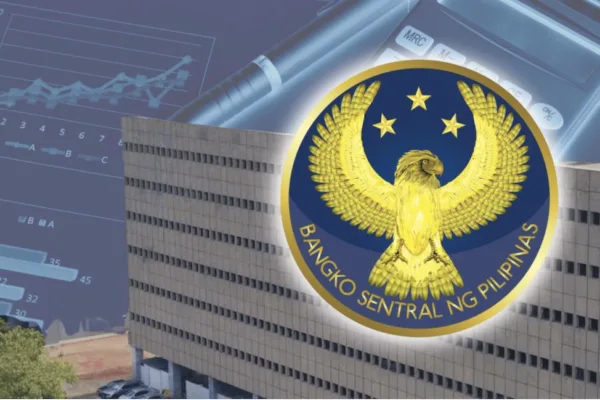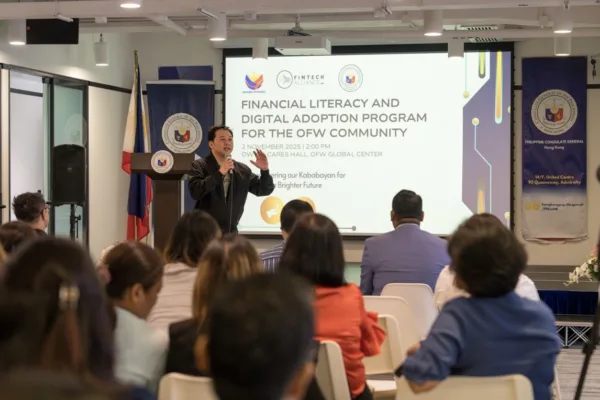The Bangko Sentral ng Pilipinas (BSP) has been focusing on financial stability since mid-2009 and one of the ways through which the central bank was able to monitor key developments in the country’s finance sector is through the Financial Stability Report (FSR).
The report provides a thematic approach and an in-depth analysis of recent developments and potential risks that may have financial stability implications in the Philippine financial system. It is published by the FSCC composed of the BSP, the Department of Finance, the Securities and Exchange Commission (SEC), the Insurance Commission, and the Philippine Deposit Insurance Corporation (PDIC).
Through the FSR, the FSCC communicates with financial system participants and helps them make better-informed decisions.

Photo shows BSP Governor and Financial Stability Coordination Council Chairman Eli M. Remolona, Jr. (third from left) while leading the launch of the 2023 FSR at the BSP head office in Manila recently. Joining him are members of the FSCC Executive Committee (from left:) SEC Commissioner Kelvin Lester K. Lee, PDIC President Roberto B. Tan, Governor Remolona, SEC Chairman Emilio B. Aquino, PDIC Senior Vice-President Sandra A. Diaz, and FSCC Technical Secretariat Head and BSP Senior Asst. Governor Johnny Noe E. Ravalo.
During the launch of the 2023 Financial Stability Report (FSR) earlier this week, the BSP announced that any expectation of an early rate cut is optimistic, but higher rates will likely remain for some time.
“Our view is that any expectation of an early rate cut is optimistic,” the Financial Stability Coordination Council (FSCC) said in its 2023 Financial Stability Report.
“It is more likely that the Fed will keep its policy rates elevated over a longer period than expected by the market,” the advisory further stated.
Being in lockstep with the US Federal Reserve
In its recent meeting, the Fed held rates unchanged and insisted that it wants “more confidence” before it starts easing.
“On our part, we believe that the assurance being sought by the Fed requires that declining inflation be accompanied by a softening labor market,” the FSCC further stated.
Market expectation is for the Fed to start cutting rates as early as May.
The BSP’s Monetary Board was set to meet last February 15 to decide on the policy rates and is widely expected to extend its pause for the third straight meeting.
Financial experts are seeing this move (of the BSP) as being in lockstep with the US Federal Reserve and the rest of the central banks globally.
This developed as inflation risks remain tilted to the upside on the back of higher food, transport, and oil costs, increased electricity rates, and the impact of El Nino.
To tame inflation and stabilize the peso, the BSP has recently emerged as the most aggressive central bank in the region after raising key policy rates by 450 basis points since May 2022.








